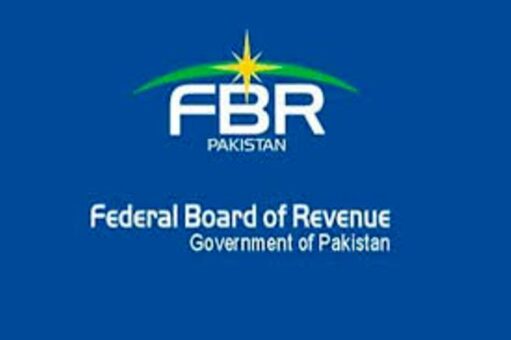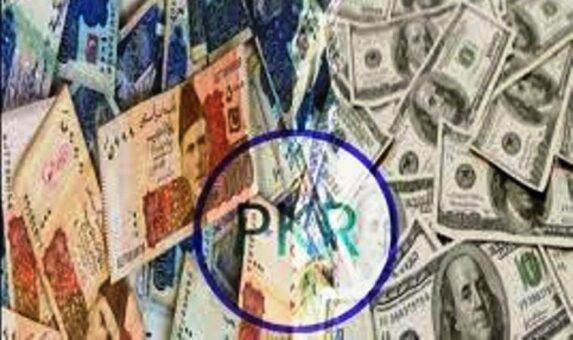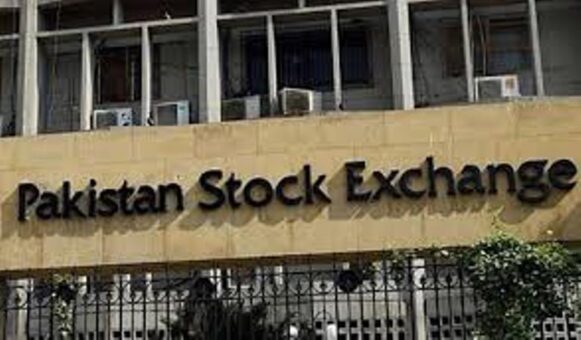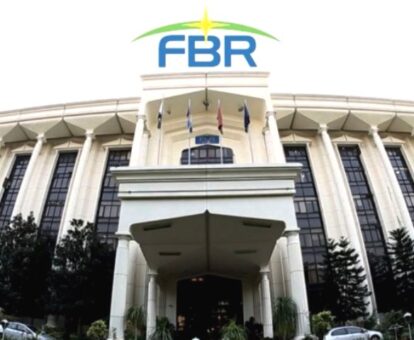A commissioner of Inland Revenue has power to select taxpayers for audit under Section 177 of Income Tax Ordinance, 2001.
(more…)Author: Faisal Shahnawaz
-

Commissioner empowered to call for any record
Section 176 of Income Tax Ordinance, 2001 explains that the commissioner is empowered to call for any records.
The Federal Board of Revenue (FBR) issued the Income Tax Ordinance, 2001 updated up to June 30, 2021. The Ordinance incorporated amendments brought through Finance Act, 2021.
Following is the text of Section 176 of Income Tax Ordinance, 2001:
176. Notice to obtain information or evidence.— (1) The Commissioner may, by notice in writing, require any person, whether or not liable for tax under this Ordinance –
“(a) to furnish to the Commissioner or an authorised officer, any information relevant to any tax leviable under this Ordinance or to fulfill any obligation under any agreement with foreign government or governments or tax jurisdiction, as specified in the notice; or”; and
(b) to attend at the time and place designated in the notice for the purpose of being examined on oath by the Commissioner or an authorised officer concerning the tax affairs of that person or any other person and, for that purpose, the Commissioner or authorised officer may require the person examined to produce any accounts, documents, or computer-stored information in the control of the person; “or”
(c) the firm of chartered accountants, or a firm of cost and management accountants as defined under the Cost and Management Accountants Act, 1966 (XIV of 1966), as appointed by the Board or the Commissioner, to conduct audit under section 177, for any tax year, may with the prior approval of the Commissioner concerned, enter the business premises of a taxpayer, to obtain any information, require production of any record, on which the required information is stored and examine it within such premises; and such firm may if specifically delegated by the Commissioner, also exercise the powers as provided in sub-section (4).
“(1A) A special audit panel appointed under sub-section (11)of section 177, for any tax year, may, with the prior approval of the Commissioner concerned, enter the business premises of a taxpayer, to obtain any information, require production of any record, on which the required information is stored and examine it within such premises and such panel may if specifically delegated by the Commissioner, also exercise the powers as provided in subsection(4).”
(2) The Commissioner may impound any accounts or documents produced under sub-section (1) and retain them for so long as may be necessary for examination or for the purposes of prosecution.
(3) The person from whom information is required, may at his option, furnish the same electronically in any computer readable media. Where a hard copy or computer disk of information stored on a computer is not made available as required under sub-section (1), the Commissioner may require production of the computer on which the information is stored, and impound and retain the computer for as long as is necessary to copy the information required.
(4) For the purposes of this section, the Commissioner shall have the same powers as are vested in a Court under the Code of Civil Procedure, 1908 (Act V of 1908), in respect of the following matters, namely: —
(a) enforcing the attendance of any person and examining the person on oath or affirmation;
(b) compelling the production of any accounts, records, computer-stored information, or computer;
(c) receiving evidence on affidavit; or
(d) issuing commissions for the examination of witnesses.
(5) This section shall have effect notwithstanding any law or rules relating to privilege or the public interest in relation to the production of accounts, documents, or computer-stored information or the giving of information.
(Disclaimer: The text of the above section is only for information. Team PkRevenue.com makes all efforts to provide the correct version of the text. However, the team PkRevenue.com is not responsible for any error or omission.)
-

Dollar rises to historic level at Rs168.94 against PKR
KARACHI: The US dollar advanced to a historic high against the Pak Rupee (PKR) on Tuesday as exchange rate was recorded at Rs168.94 in interbank foreign exchange market.
The rupee lost 84 paisas against the dollar from previous day’s closing of Rs168.10 in the interbank foreign exchange market.
Currency experts said that foreign currency demand was seen for import and corporate payments during the day.
They said that widening of trade deficit had kept the pressure on demand side. They said import prices of international commodities and energy had witnessed substantial increase.
They said that the country required immediate support in the share of export dollars and inflows of workers’ remittances to support the local currency.
-

SBP issues customers exchange rates for September 14
Karachi, September 14, 2021 – The State Bank of Pakistan (SBP) has unveiled the exchange rates for customers on Tuesday, September 14, 2021.
(more…) -

OTC payment allowed till Sept 30 to facilitate return filing
ISLAMABAD: The Federal Board of Revenue (FBR) has said that the alternate facility of making the payment over the counter (OTC) still allowed simultaneously along with the Alternate Delivery Channel (ADC) channel till September 30, 2021, so that no inconvenience is caused to the individual taxpayer for seamless filing of returns.
FBR has launched single identifier number for all domestic taxes. Under this initiative, a taxpayer can use all applications under the Income Tax, Sales Tax and Federal Excise duty by mere use of CNIC if a taxpayer is an individual.
In case of partnership firms and companies, National Tax Number (NTN) shall be the common tax identifier number. In this manner the Sales Tax, Income Tax and Federal Excise law have been harmonized.
This is an important step toward ease of doing business and will substantially improve Pakistan’s rating on this count.
FBR has also launched a facility whereby taxpayers can now make payments without visiting the bank. This facility is widely known as Alternate Delivery Channel (ADC) payment mode.
The ADC allows taxpayer to pay all Federal taxes and duties i.e. Income Tax, Sales Tax, Customs duty and Federal Excise Duty from any commercial bank account through internet banking, ATM, mobile banking and Contact Centers.
However, in the case of an individual taxpayer, the alternate facility of making the payment over the counter (OTC) has still been allowed simultaneously along with ADC channel till September 30, 2021, so that no inconvenience is caused to the individual taxpayer for seamless filing of returns.
-

Stock market observes mixed trading; gains 72 points
KARACHI: The stock market made a gain of 72 points on Monday in a mixed trading activity.
The benchmark KSE-100 index of Pakistan Stock Exchange (PSX) ended at 47,270 points as against last Friday’s closing of 47,198 points, showing an increase of 72 points.
Analysts at Arif Habib Limited said that the market consolidated the gains made in the previous sessions with profit booking in technology, cement, steel and refinery sectors, whereas the index got some support from banks and power sector.
Technology sector saw selling pressure that brought AVN and other tech stocks down, despite hitting a historic IPO of Octopus Digital in the previous week.
Among scrips, BYCO topped the volumes with 44.9 million shares, followed by SERFR (42.1 million) and TPLP (41 million).
Sectors contributing to the performance include Banks (+85 points), E&P (+21 points), Power (+20 points), Pharma (+16 points), Technology (-44 points) and Cement (-17 points).
Volumes declined from 427.4 million shares to 395.8 million shares (-8 per cent DoD). Average traded value also declined by 11 per cent to reach US$ 96.3 million as against US$108.1 million.
Stocks that contributed significantly to the volumes include BYCO, SERFR, TPLP, TELE and TPL, which formed 45 per cent of total volumes.
Stocks that contributed positively to the index include UBL (+66 points), HBL (+33 points), AGP (+20 points), COLG (+18 points) and HUBC (+18 points). Stocks that contributed negatively include TRG (-36 points), MEBL (-35 points), BAHL (-14 points), PIOC (-8 points) and MLCF (-8 points).
-

FBR’s powers to enter taxpayers’ premises for search
Section 175 of Income Tax Ordinance, 2001 authorized officials of Federal Board of Revenue (FBR) to enter any premises of taxpayers for search and take possession of records.
The Federal Board of Revenue (FBR) issued the Income Tax Ordinance, 2001 updated up to June 30, 2021. The Ordinance incorporated amendments brought through Finance Act, 2021.
Following is the text of Section 175 of Income Tax Ordinance, 2001:
175. Power to enter and search premises.— (1) In order to enforce any provision of this Ordinance (including for the purpose of making an audit of a taxpayer or a survey of persons liable to tax), the Commissioner or any officer authorised in writing by the Commissioner for the purposes of this section –
(a) shall, at all times and without prior notice, have full and free access including real-time electronic access to any premises, place, accounts, documents or computer;
(b) may stamp, or make an extract or copy of any accounts, documents or computer-stored information to which access is obtained under clause (a);
(c) may impound any accounts or documents and retain them for so long as may be necessary for examination or for the purposes of prosecution;
(d) may, where a hard copy or computer disk of information stored on a computer is not made available, impound and retain the computer for as long as is necessary to copy the information required; and
(e) may make an inventory of any articles found in any premises or place to which access is obtained under clause (a).
(2) The Commissioner may authorize any valuer or expert to enter any premises and perform any task assigned to him by the Commissioner.
(3) The occupier of any premises or place to which access is sought under sub-section (1) shall provide all reasonable facilities and assistance for the effective exercise of the right of access.
(4) Any accounts, documents or computer impounded and retained under sub-section (1) shall be signed for by the Commissioner or an authorised officer.
(5) A person whose accounts, documents or computer have been impounded and retained under sub-section (1) may examine them and make extracts or copies from them during regular office hours under such supervision as the Commissioner may determine.
(6) Where any accounts, documents or computer impounded and retained under sub-section (1) are lost or destroyed while in the possession of the Commissioner, the Commissioner shall make reasonable compensation to the owner of the accounts, documents or computer for the loss or destruction.
(7) This section shall have effect notwithstanding any rule of law relating to privilege or the public interest in relation to access to premises or places, or the production of accounts, documents or computer-stored information.
(8) In this section, “occupier” in relation to any premises or place, means the owner, manager or any other responsible person on the premises or place.
(9) For the purpose of clause (a) of sub-section (1), the Board may make rules relating to electronic real-time assess for audit or a survey of persons liable to tax.
175A. Real-time access to information and databases.- (1) Notwithstanding anything contained in any law for the time being in force, including but not limited to the National Database and Registration Authority Ordinance, 2000 (Ordinance VIII of 2000), and the Emigration Ordinance, 1979(Ordinance XVIII of 1979), arrangements shall be made to provide real-time access of information and database to the Board in the prescribed form and manner by-
(a) the National Database and Registration Authority with respect to information pertaining to National Identity Card, Pakistan Origin Card, Overseas Identity Card, Alien Registration Card, and other particulars contained in the Citizen Database.
(b) the Federal Investigation Agency and the Bureau of Emigration and Overseas Employment with respect to details of international travel;
(c) the Federal Investigation Agency and the Bureau of Emigration and Overseas Employment with respect to details of international entry and exit of all persons and information pertaining to work permits, employment visas and immigration visas;
(d) the Islamabad Capital Territory and provincial and local land record and development authorities with respect to record-of-rights including digitized edition of record-of-rights, periodic record, record of mutations and report of acquisition of right;
(e) the Islamabad Capital Territory and provincial Excise and Taxation Departments with respect to information regarding registration of vehicles, transfer of ownership and other associated record;
(f) All electricity suppliers and gas transmission and distribution companies with respect to particulars of a consumer, the units consumed and the amount of bill charged or paid:
Provided that where the connection is shared or is used by a person other than the owner, the name and CNIC of the owner and the user shall also be furnished:
Provided further that all electricity suppliers and gas transmission and distribution companies shall make arrangements by the 1st day of January, 2021 for allowing consumers to update the ratio of sharing of a connection or the particulars of users, as the case may be; and
(g) any other agency, authority, institution or organization notified by the Board.
(2) The Board shall make arrangements for laying the infrastructure for real-time access to information and database under sub-section (1) and aligning it with its own database in the manner as may be prescribed.
(3) Until real-time access to information and database is made available under sub-section (1), such information and data shall be provided periodically in such form and manner as may be prescribed.
(4) Subject to section 216, all information received under this section shall be used only for tax purposes and kept confidential.
(Disclaimer: The text of the above section is only for information. Team PkRevenue.com makes all efforts to provide the correct version of the text. However, the team PkRevenue.com is not responsible for any error or omission.)
-

Taxpayers must maintain record of past 6 years
Section 174 of Income Tax Ordinance, 2001 explains the taxpayers must maintain records in form of accounts or documents, of past six years.
The Federal Board of Revenue (FBR) issued the Income Tax Ordinance, 2001 updated up to June 30, 2021. The Ordinance incorporated amendments brought through Finance Act, 2021.
Following is the text of Section 174 of Income Tax Ordinance, 2001:
174. Records.— (1) Unless otherwise authorised by the Commissioner, every taxpayer shall maintain in Pakistan such accounts, documents and records as may be prescribed.
(2) The Commissioner may disallow or reduce a taxpayer’s claim for a deduction if the taxpayer is unable, without reasonable cause, to provide a receipt, or other record or evidence of the transaction or circumstances giving rise to the claim for the deduction.
(3) The accounts and documents required to be maintained under this section shall be maintained for six years after the end of the tax year to which they relate:
Provided that where any proceeding is pending before any authority or court the taxpayer shall maintain the record till final decision of the proceedings.
Explanation.— Pending proceedings include proceedings for assessment or amendment of assessment, appeal, revision, reference, petition or prosecution and any proceedings before an Alternative Dispute Resolution Committee”.
(4) For the purpose of this section, the expression “deduction” means any amount debited to trading account, manufacturing account, receipts and expenses account or profit and loss account.
(5) The Commissioner may require any person to install and use an Electronic Tax Register of such type and description as may be prescribed for the purpose of storing and accessing information regarding any transaction that has a bearing on the tax liability of such person.
(Disclaimer: The text of the above section is only for information. Team PkRevenue.com makes all efforts to provide the correct version of the text. However, the team PkRevenue.com is not responsible for any error or omission.)
-

Liability and obligations of representatives
Section 173 of Income Tax Ordinance, 2001 explains the liability and obligations of representatives.
The Federal Board of Revenue (FBR) issued the Income Tax Ordinance, 2001 updated up to June 30, 2021. The Ordinance incorporated amendments brought through Finance Act, 2021.
Following is the text of Section 173 of Income Tax Ordinance, 2001:
173. Liability and obligations of representatives. — (1) Every representative of a person shall be responsible for performing any duties or obligations imposed by or under this Ordinance on the person, including the payment of tax.
(2) Subject to sub-section (4), any tax that, by virtue of sub-section (1), is payable by a representative of a taxpayer shall be recoverable from the representative only to the extent of any assets of the taxpayer that are in the possession or under the control of the representative.
(3) Every representative of a taxpayer who pays any tax owing by the taxpayer shall be entitled to recover the amount so paid from the taxpayer or to retain the amount so paid out of any moneys of the taxpayer that are in the representative’s possession or under the representative’s control.
(3A) Any representative, or any person who apprehends that he may be assessed as a representative, may retain out of any money payable by him to the person on whose behalf he is liable to pay tax (hereinafter in this section referred to as the “principal”), a sum equal to his estimated liability under this Ordinance, and in the event of disagreement between the principal and such a representative or a person as to the amount to be so retained, such representative or person may obtain from the Commissioner a certificate stating the amount to be so retained pending final determination of the tax liability, and the certificate so obtained shall be his authority for retaining that amount.
(4) Every representative shall be personally liable for the payment of any tax due by the representative in a representative capacity if, while the amount remains unpaid, the representative –
(a) alienates, charges or disposes of any moneys received or accrued in respect of which the tax is payable; or
(b) disposes of or parts with any moneys or funds belonging to the taxpayer that is in the possession of the representative or which comes to the representative after the tax is payable, if such tax could legally have been paid from or out of such moneys or funds.
(5) Nothing in this section shall relieve any person from performing any duties imposed by or under this Ordinance on the person which the representative of the person has failed to perform.
(Disclaimer: The text of the above section is only for information. Team PkRevenue.com makes all efforts to provide the correct version of the text. However, the team PkRevenue.com is not responsible for any error or omission.)
-

SBP issues customers exchange rates for September 13
KARACHI: The State Bank of Pakistan (SBP) on Monday issued customers’ exchange rates for September 13, 2021. The exchange rate is on the basis of weighted average rates of commercial banks.
The SBP said the data is compiled and disseminated for information only.
These exchange rates are estimates that quoted by various commercial banks to their clients.
The banks provide their indicative exchange rates for commercial transactions with customers.
CURRENCY BUYING SELLING AED 45.7484 45.8436 AUD 123.3739 123.6253 CAD 132.4807 132.7466 CHF 182.6249 183.0018 CNY 26.0547 26.1053 EUR 198.0086 198.4212 GBP 232.1058 232.5874 JPY 1.5256 1.5289 SAR 44.7714 44.8631 USD 167.8927 168.2560